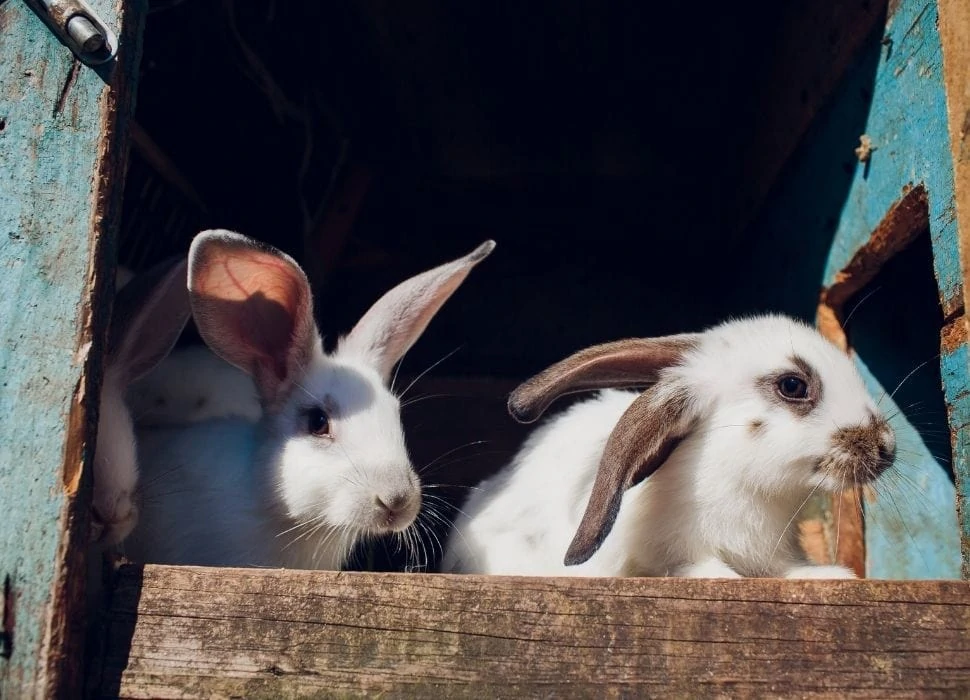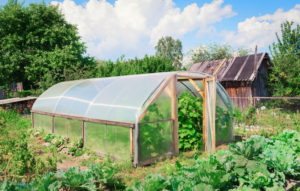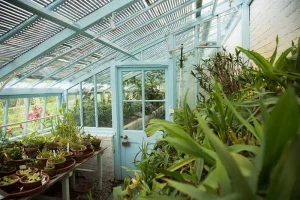If you’re dreaming of living off the grid and producing your own food, then consider starting a self-sufficient rabbitry.
Not only do rabbits require minimal space and resources compared to other livestock, but they also offer a wide range of benefits, from their high-protein meat to their soft and warm fur.
With the right planning and setup, you can create a thriving rabbitry on your off-grid property that will provide for your needs and perhaps even generate some income.
Start small
Begin with a few rabbits and gradually increase your herd size as you gain experience and confidence in your ability to care for them.
Beginning with just a few rabbits allows you to gain hands-on experience and confidence in your ability to care for them before scaling up to a larger herd size.
By starting small, you can focus on providing high-quality care and attention to each individual rabbit, which can lead to better health and productivity outcomes.
As you become more comfortable with the basics of rabbit care, such as feeding, watering, and cleaning, you can gradually increase your herd size to meet growing demand or to explore new market opportunities.
This gradual approach also helps you avoid common pitfalls, such as overcrowding or inadequate nutrition, which can lead to poor health and even fatalities.
So, start small and grow slowly and steadily, ensuring that your rabbits receive the best possible care every step of the way.
Choose the right breeds
Select breeds that are well-suited to your climate and the purpose of your rabbitry (meat, fur, or both). Some popular breeds for self-sufficient rabbitries include the New Zealand White, the Californian, and the Champagne d’Argent.
When establishing a self-sufficient rabbitry, choosing the right breeds is important for success.
The breeds you select should be well-suited to your climate and the purpose of your rabbitry, whether it be for meat, fur, or both.
Some popular breeds for self-sufficient rabbitries include the New Zealand White, the Californian, and the Champagne d’Argent.
The New Zealand White is a versatile breed that excels in both meat and fur production.
They are hardy and easy to manage, making them an excellent choice for beginner rabbitries.
They have a white coat with a short, dense undercoat and a medium-length, straight topcoat, which makes them well-suited for both cold and hot climates.
The Californian is a breed that originated in the United States and is known for its high-quality meat and medium-length, silky fur.
They are well-suited to warm climates and are easy to handle, making them a great choice for small-scale rabbitries.
They come in a variety of colors, including black, blue, and chocolate.
The Champagne d’Argent is a rare and beautiful breed that is well-suited to both meat and fur production.
They have a white coat with a silver sheen and a distinctive champagne marking on their forehead.
They are hardy and robust, making them a great choice for self-sufficient rabbitries.
They are also known for their friendly and docile temperament, which makes them easy to handle.
Choosing the right breeds for your self-sufficient rabbitry is essential for success.
The New Zealand White, the Californian, and the Champagne d’Argent are all excellent choices that will provide you with high-quality meat and fur.
They are also hardy and easy to handle, making them perfect for small-scale rabbitries.
Please note that in the above text there are three breeds: New Zealand White, Californian and Champagne d’Argent, can you elaborate on these three breeds and their characteristics?
Also, if possible, could you provide some information about the price range of these breeds?
Each of these breeds offers unique characteristics that make them well-suited to different purposes and climates.
The New Zealand White is a popular breed that is known for its high-quality meat and large size.
They are easy to handle and have a docile temperament, making them perfect for small-scale rabbitries.
These rabbits are also great for meat production, as they have a high muscle mass and a fine-grained meat.
They are best suited for temperate climates and are priced between $30 to $50 per pair.
The Californian is another breed that is well-suited for meat production, but it is also a good choice for fur production.
They have a thick, lustrous coat that makes them a popular choice for angora fiber production.
These rabbits are easy to handle and are best suited for warm climates.
They are priced between $30 to $50 per pair.
The Champagne d’Argent is a breed that is known for its high-quality fur and its ability to thrive in a variety of climates.
They have a thick, soft coat that is perfect for angora fiber production.
They are easy to handle and are priced between $30 to $50 per pair.
The Nille is a breed that is known for its excellent meat quality and its ability to thrive in cold climates.
They have a medium-sized frame and a muscular build, making them well-suited for meat production.
They are also easy to handle and are priced between $30 to $50 per pair.
The Netherland Dwarf is a breed that is known for its small size and friendly temperament, making them perfect for small-scale rabbitries.
They are also great for meat production, as they have a high muscle mass and a fine-grained meat.
They are best suited for temperate climates and are priced between $30 to $50 per pair.>
Choosing the right breeds for your rabbitry is a important step in ensuring the success of your venture.
When selecting breeds, consider the purpose of your rabbitry, as well as the climate where you will be raising the rabbits.
For example, if you are looking to produce meat, you may want to consider breeds like the Nille or the Netherland Dwarf.
These breeds are known for their excellent meat quality and are well-suited for meat production.
They also have a medium to small frame, making them easy to handle and suitable for small-scale rabbitries.
Another important factor to consider is the climate where you will be raising your rabbits.
Breeds like the Nille are well-suited for cold climates, while breeds like the Netherland Dwarf are best suited for temperate climates.
Breeds like the Nille are known for their muscular build and high meat quality, making them a great choice for those looking to produce high-quality meat.
In terms of pricing, you can expect to pay between $30 to $60 for a show-quality Netherland Dwarf rabbit.
These rabbits are highly sought after for their beautiful coats and small size, making them a popular choice for those looking to start a small-scale rabbitry.
On the other hand, Nille rabbits are typically less expensive, with prices ranging from $10 to $20.
These rabbits are less sought after than the Netherland Dwarf, but they are still a great choice for those looking to produce high-quality meat.
It is important to do your research and choose the right breeds for your rabbitry.
Consider the purpose of your rabbitry, the climate where you will be raising the rabbits, and the pricing of the breeds you are interested in.
With the right breeds, you can ensure the success of your rabbitry and the quality of your products.]
Choosing the Right Breeds for Your Rabbitry
When starting a rabbitry, selecting the right breeds is important for the success of your operation.
There are various breeds to choose from, each with its own unique characteristics, purposes, and price ranges.
Understanding the purpose of your rabbitry, the climate where you will be raising the rabbits, and the pricing of the breeds you are interested in is essential to making the right choice.
For example, if you are looking to produce high-quality meat, Nille rabbits may be a good choice.
These rabbits are less sought after than show-quality Netherland Dwarf rabbits, but they are still a great option for producing high-quality meat.
Prices for Nille rabbits typically range from $10 to $20, making them a more affordable option for those just starting out.
On the other hand, if you are looking to produce high-quality fur, show-quality Netherland Dwarf rabbits may be the way to go.
These rabbits are highly sought after and can sell for anywhere from $50 to $100, depending on the color and quality of the fur.
However, their smaller size and high maintenance needs make them a less practical choice for those looking to produce large quantities of meat.
Ultimately, the right breed for you will depend on the goals of your rabbitry and the resources you have available to you.
Do your research, consider your options carefully, and make the best decision for your specific needs.
Provide appropriate housing
Rabbits need a safe and comfortable place to live. Build or purchase a hutch that is well-ventilated, dry, and protected from the elements. Make sure it has enough space for the number of rabbits you plan to keep, and consider adding a secure outdoor area for exercise and grazing.
Providing a safe and comfortable living space for your rabbits is important for their health and well-being.
A well-ventilated, dry, and protected hutch or enclosure is essential to keep your rabbits safe from the elements and predators.
The size of the housing should be commensurate with the number of rabbits you plan to keep, and it should provide enough space for them to move around comfortably.
It’s important to consider adding a secure outdoor area for exercise and grazing.
This will not only enrich your rabbits’ lives but also provide them with the opportunity to engage in natural behaviors like hopping, digging, and foraging.
When building or purchasing a hutch, look for one that is sturdy, easy to clean, and has a solid floor or mesh bottom to prevent your rabbits from escaping or digging their way out.
The hutch should also be well-lit and have adequate ventilation to prevent the buildup of ammonia and keep the air fresh.
Furthermore, make sure the hutch is protected from direct sunlight and extreme temperatures, as these can cause discomfort and health problems for your rabbits.
By providing appropriate housing for your rabbits, you are not only ensuring their health and safety but also promoting their overall well-being and quality of life.
With a comfortable and secure living space, your rabbits will be happy and healthy, and they will thrive under your care.
Plan your feeding strategy
Rabbits are herbivores and need a diet high in fiber and low in protein. Consider planting a variety of hay, vegetables, and herbs to provide a nutritious and self-sufficient diet for your rabbits. You may also need to supplement their diet with high-quality pellets.
Planning your feeding strategy for your rabbits is important to ensure they receive a balanced and nutritious diet.
As herbivores, rabbits require a diet high in fiber and low in protein.
To provide this, consider planting a variety of hay, vegetables, and herbs.
Timothy hay is a good option for fiber, while leafy greens like kale, collard greens, and spinach are rich in vitamins and minerals.
Adding herbs like parsley, cilantro, and mint can provide additional nutrients and flavor.
Aim to provide at least 80% of their diet in fresh foods and supplement with high-quality pellets.
This approach will not only ensure your rabbits’ optimal health but also help them maintain a healthy digestive system.
Regularly review and adjust their diet based on their individual needs and activity level to ensure they stay happy and healthy.
Manage your rabbits’ health
Regular veterinary care is essential to maintaining a healthy rabbitry. Learn to recognize signs of illness, and have a relationship with a local veterinarian who is experienced in caring for rabbits.
Managing your rabbits’ health is a important aspect of maintaining a healthy and thriving rabbitry.
Regular veterinary care is essential to ensure the well-being of your rabbits, as they are prone to various health issues such as respiratory problems, dental problems, and gastrointestinal issues.
Therefore, it is important to establish a relationship with a local veterinarian who has experience in caring for rabbits.
This veterinarian can provide guidance on proper husbandry, nutrition, and health care for your rabbits.
It is important to learn to recognize signs of illness in your rabbits, such as changes in behavior, appetite, or droppings, so that you can seek veterinary care promptly if needed.
By prioritizing your rabbits’ health, you can help prevent diseases, minimize the need for emergency care, and ensure the longevity of your rabbitry.
Develop a breeding and litter plan
To maintain a self-sufficient rabbitry, you will need to breed your does (female rabbits) regularly to produce kits (baby rabbits). Plan your breeding schedule to ensure that you have enough does in breeding condition to produce kits every few months.
As a responsible rabbit breeder, developing a comprehensive breeding and litter plan is important to maintaining a self-sufficient rabbitry.
To begin, it is essential to identify the optimal breeding season for your specific geographic location and climate.
In temperate regions, breeding should occur during the spring and fall when temperatures are mild and humidity is moderate.
This will help ensure the health and well-being of the does and kits.
Next, you should select the best breeding pairs based on desirable traits such as coat color, size, temperament, and genetics.
Ideally, choose breeding pairs that exhibit a balance of these traits to produce healthy and robust kits.
It is also important to maintain accurate records of breeding pairs and their lineage to track progress and make informed decisions about future breeding.
In addition, plan your breeding schedule to ensure that you have enough does in breeding condition to produce kits every few months.
This may involve strategic planning and timed breeding to coordinate with the optimal breeding season.
A proper breeding schedule will help maintain a consistent supply of kits, which is essential for a self-sufficient rabbitry.
Be prepared to care for the does and kits during the breeding and gestation period.
Provide a safe and comfortable environment, rich in nutrients, and monitor their health closely to prevent complications.
With a well-planned breeding and litter plan, you can ensure a successful and sustainable rabbitry.
Consider fur and meat production
Depending on your goals, you may want to consider breeding rabbits for their fur or meat. This will require additional equipment and management strategies, but can provide a valuable source of income.
Considering fur and meat production can be a lucrative option for rabbit farmers who are looking to diversify their income streams.
Breeding rabbits for their fur can be a profitable venture, especially if you focus on raising breeds with high-quality pelts such as Angora, Finn-Lop, or Champagne d’Argent.
To maximize fur production, it’s essential to provide proper nutrition, care, and grooming for your rabbits.
You may need to invest in specialized equipment such as fur-sorting machines and professional drying and cleaning facilities to ensure the highest quality of the finished product.
On the other hand, raising rabbits for meat can be a more straightforward operation, as there is a high demand for rabbit meat in many parts of the world.
However, it’s important to consider factors such as market trends, competition, and local regulations before deciding to enter this market.
Proper planning, management, and execution are key to achieving success in both fur and meat production.
Efficient use of resources
Make sure to use resources efficiently, including water, feed, and space. Consider housing your rabbits in a hoop coop or other efficient, predator-proof shelter. Use feeders and waterers that reduce waste and make cleaning easy.
To ensure the efficient use of resources when raising rabbits, it is important to carefully consider the amount of water, feed, and space needed for your herd.
One effective option for housing your rabbits is a hoop coop, which provides a secure and predator-proof environment while minimizing the need for materials and space.
Using feeders and waterers that are specifically designed for rabbits can help reduce waste and make cleaning easier.
For example, using a self-feeder or a water bottle with a built-in filter can help prevent spills and waste, while also making it easier to keep the feeding and watering areas clean.
By implementing these efficient resource use strategies, you can ensure the health and well-being of your rabbits while also minimizing your expenses and environmental impact.
Want More? Dive Deeper Here!
Hey there! If you’re the type who loves going down the rabbit hole of information (like we do), you’re in the right spot. We’ve pulled together some cool reads and resources that dive a bit deeper into the stuff we chat about on our site. Whether you’re just killing time or super into the topic, these picks might just be what you’re looking for. Happy reading!






